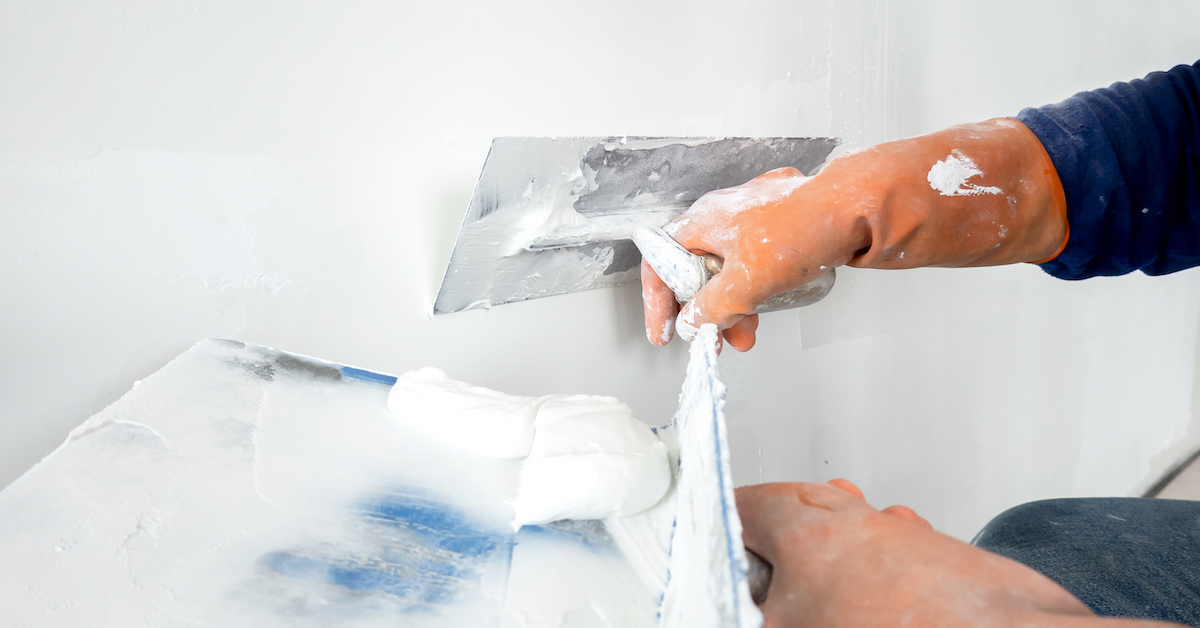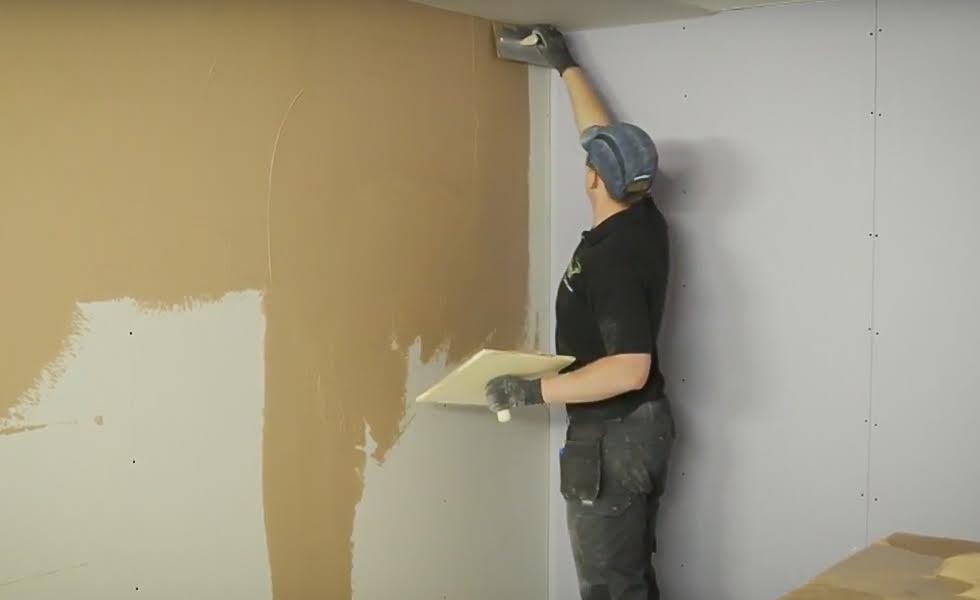The Process and Benefits of Skimming Walls Before Painting Explained

Skimming walls is a crucial step in the process of painting. Whether you are renovating your home or just giving it a fresh new look, skimming can make all the difference. It involves applying a thin layer of plaster to walls and ceilings, creating a smooth and even surface for paint to adhere to. This process can be especially beneficial for older homes with textured or uneven walls.
If you’re located in Edinburgh, UK or any other part of the UK, skimming should be a top priority before painting. It may seem like an extra step, but it has several advantages that make it worth the time and effort. In this guide, we’ll explain the process of skimming walls and highlight its benefits so you can understand why it’s an essential part of any painting project.
What Is Skimming Walls?
Skimming walls is a technique used by professional painters and decorators to prepare surfaces for painting. It involves applying a thin layer of joint compound or spackle over the entire surface of a wall, using a trowel or putty knife.
This thin layer fills in any small imperfections on the wall's surface, such as hairline cracks, dents, or uneven textures. Once the skim coat is applied and dried, it can be sanded down to create a smooth and even surface ready for paint application.
Why Skimming Walls In Edinburgh UK Is Important

Skimming walls in Edinburgh UK is an important task for many reasons. Firstly, it helps to create a smooth and flawless surface for painting which can greatly enhance the overall look of a room or building. It also allows paint to adhere better, resulting in a longer-lasting and more professional finish.
Skim coating can also help to improve the structural integrity of walls. By filling in any cracks or imperfections, it strengthens the surface and prevents further damage from occurring. This is especially important for older buildings that may have experienced wear and tear over time.
In addition, skimming walls can save time and money in the long run. By addressing any imperfections before painting, it eliminates the need for multiple layers of paint or repairs in the future. This can also be a more cost-effective solution compared to completely replacing damaged walls.
Process Of Skimming Walls Before Painting Explained

The process of skimming walls involves several steps, including preparation, application, and finishing. Here is a brief overview of each step:
Preparation: Before beginning the skimming process, it is important to prepare the surface by cleaning it thoroughly and removing any loose debris or old paint. This will ensure that the skim coat adheres properly and creates a smooth finish.
Application: The next step is to mix the skim coating material according to the manufacturer's instructions. Once mixed, the skim coat is applied using a trowel in thin layers over the surface. It is important to work quickly and efficiently during this step to avoid any drying or clumping of the material.
Sanding: After the skim coat has been applied and dried, it is important to sand the surface using a fine-grit sandpaper. This will help smooth out any imperfections and create an even finish. It may be necessary to apply multiple coats of skim coating and repeat the sanding process until you achieve your desired level of smoothness.
Priming: Once the surface has been sanded, it is recommended to prime it before painting. This will help seal the surface and provide a better base for paint adhesion. Make sure to use a primer that is compatible with both the skim coating material and paint.
Painting: Finally, you can paint the surface as desired. It is important to use a high-quality paint and apply it evenly for the best results. You can choose from a variety of finishes such as matte, satin, or glossy depending on your preference.
This is the complete process for skim coating a wall. However, it is important to note that this technique may not work for all types of walls and surfaces.
Top Benefits Of Skimming Walls Before Painting
:max_bytes(150000):strip_icc()/how-to-skim-coat-walls-5116693-04-c2f4c2c7ddc549ad8b4673d66f3ce394.jpg)
Now you know the process of skim coating a wall, but why should you do it? Here are some top benefits of skimming walls before painting:
Smooth Surface
Skimming walls creates a perfectly smooth and even surface that is ideal for painting. A bare or uneven wall often contains imperfections such as small cracks, dents, or uneven textures. Applying a skim coat eliminates these blemishes by filling in gaps and leveling the surface.
This not only enhances the overall finish but also ensures that paint adheres uniformly without streaks or patches. A smooth wall provides a professional-grade result that enhances the appearance of any room.
Whether you're aiming for a flawless matte look or a vibrant glossy finish, a smooth base is crucial for achieving the aesthetic and durability you desire in your decorations.
Improved Adhesion
Applying a skim coat before painting ensures better adhesion for the paint to the wall surface. Paint sticks much more effectively to a smooth and consistent surface created by the skimming process. Skim coating reduces the risk of peeling, chipping, or bubbling over time, which can occur if the paint is applied directly onto a rough or uneven wall.
By creating an ideal base for the paint, you also enhance its longevity. This improved bond between the paint and the wall ultimately helps maintain the polished finish and prevents frequent retouching or repairs, making it a vital step for any painting project.
Saves Time and Money
While skim coating may seem like an extra step, it actually saves time and money in the long run. A properly skim-coated wall requires fewer layers of paint, as the smooth surface allows for even coverage with less effort.
Without the need to apply multiple coats to cover imperfections, the painting process becomes more efficient and cost-effective. Additionally, by preventing future issues like peeling paint or uneven finishes, skim coating reduces maintenance expenses over time.
Investing in a skim coat before painting pays off by streamlining the project, reducing paint usage, and minimising the need for later repairs or repainting.
Better Aesthetic Appeal
The aesthetic appeal of your walls significantly improves with a skim coat as the foundation. Uneven walls with visible blemishes or textures can detract from the overall look of a space. Skim coating creates a clean, sleek, and flawless surface, allowing paint to appear smooth and professional when applied.
This contributes to a more polished final result that enhances the beauty of any room. Whether you're opting for a bold colour, a subtle shade, or even textured paint designs, a well-skimmed wall provides the ideal base to bring out the true effect of the finish, elevating the space's overall visual impact.
Covers Imperfections
One of the primary benefits of skim coating is its ability to cover imperfections on wall surfaces. Small cracks, dents, uneven patches, and other flaws can be effectively hidden with this technique. Instead of requiring intensive repairs or settling for an imperfect finish, skimming offers a practical solution that restores the wall's condition.
It creates a seamless surface, ensuring that paint or wallpaper can be applied without drawing attention to underlying defects. Skim coating is particularly beneficial for older walls that may have accumulated damage over time, providing a fresh and rejuvenated appearance while extending the lifespan of the wall itself.
Can A Homeowner Do Skim Coating Themselves?

While it is possible for homeowners to skim coat their walls themselves, the process requires patience, precision, and the right tools. Skim coating involves applying a thin layer of joint compound evenly across the wall's surface using a trowel or a drywall knife.
For those with prior DIY experience and a steady hand, it can be a manageable task. However, beginners may find it challenging to achieve a perfectly smooth finish without practice. Proper preparation is essential, such as cleaning the wall, ensuring it is free of debris, and using high-quality materials.
Homeowners should also consider the scale of the project; large areas may be better suited for professionals. With the right guidance and effort, though, smaller skim coating projects can be a rewarding and cost-effective DIY endeavor.
Can You Skim Coat Over Textured Walls?
Yes, you can skim coat over textured walls to achieve a smooth, clean surface. Skim coating is a common solution for covering various textures, such as knockdown, orange peel, or popcorn finishes. However, preparation is key to success.
Before applying the skim coat, thoroughly clean the textured wall and repair any cracks or damaged areas. Depending on the texture's depth, multiple layers of joint compound may be required to fully level the surface.
A wide taping knife or trowel ensures even application, while sanding between layers helps achieve a flawless finish. For best results, patience and attention to detail are essential. Skim coating over textured walls is an effective way to modernise and rejuvenate interior spaces without removing the texture entirely.
Transform Your Walls with Capital Painters' Skimming & Surface Prep Expertise

Ready to give your walls a fresh start? At Capital Painters and Decorators, we’re Edinburgh’s go-to experts for skimming and surface preparation, helping you create flawless interiors that leave a lasting impression.
Our team specialises in delivering smooth, seamless wall finishes—laying the perfect foundation for your dream decor. Whether it’s your flat, house, or commercial space, we focus on precision and detail to ensure every surface looks stunning. From repairing imperfections to prepping for a flawless coat of paint, we handle it all with care and craftsmanship.
Why wait? Contact us today at Contactinfo@capitalpainters-decorators.co.uk or call us on 07517 002241. Share your vision, and we’ll bring it to life with reliable service, competitive pricing, and results that wow.
Let Capital Painters turn your walls into a masterpiece. Don’t settle for ordinary—let’s create extraordinary!
FAQs
What is skim coating walls and why is it important?
Skim coating walls involves applying a thin coat of drywall compound over the entire wall to smooth out uneven surfaces. It helps create a flawless finish, especially after repairing loose plaster or dealing with old, rough textures before painting.
How do I prepare the room before the first coat?
Before the first coat, cover floors and furniture with plastic sheeting to protect from plaster dust. Make sure the entire wall is clean and free of loose plaster. This preparation is key to a successful skim coating and painting process.
What tools are needed for skim coating walls?
You’ll need a drywall compound, a trowel or wide blade, and a paint roller to apply the thin coat. Mixing plaster properly ensures smooth application, and using the right tools makes it easier to cover uneven surfaces across the entire wall.
Does skim coating help with long-term paint results?
Yes, skim coating walls creates a smooth surface that helps paint adhere better and look more even. By covering imperfections and loose plaster, it enhances the appearance and durability of the finished wall after painting the first coat.
Conclusion
Skimming walls before painting is one of the best ways to achieve a smooth, long-lasting, professional finish.
By smoothing out imperfections and creating an ideal surface for paint, it enhances both durability and appearance. Whether you’re renovating an older property in Edinburgh or decorating a new space, skimming ensures standout results.
Skimming improves paint adhesion, lowers maintenance costs, and reduces the need for extra coats, saving time and effort. It’s a smart choice for anyone who values quality and detail in their home or commercial space.
For expert results, trust Capital Painters and Decorators. With our skimming and surface preparation expertise, your walls won’t just be painted—they’ll be perfected.